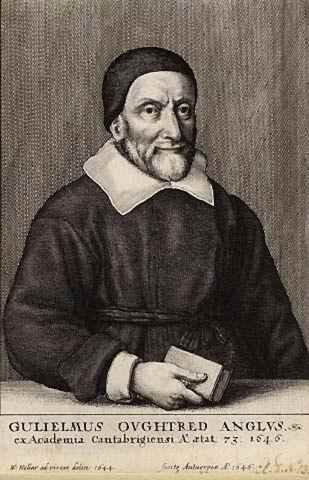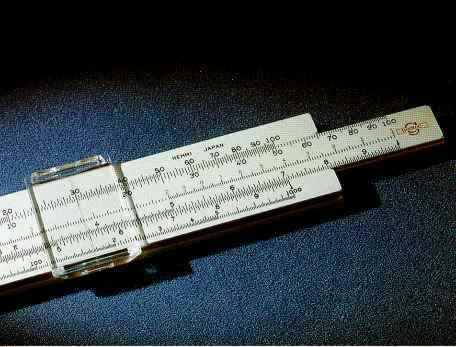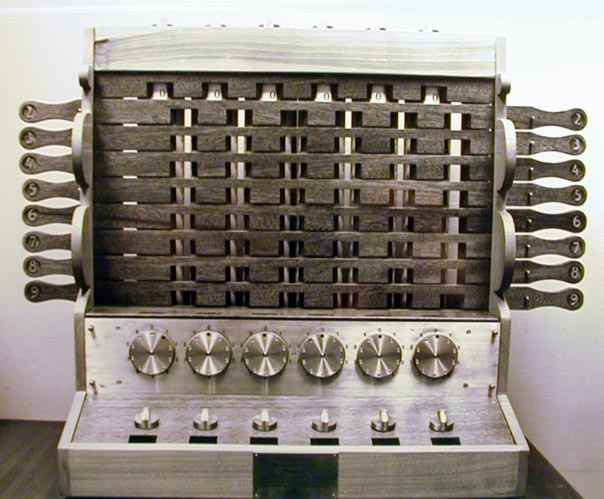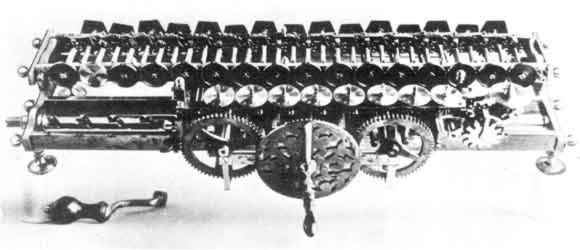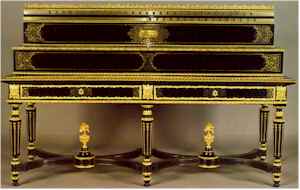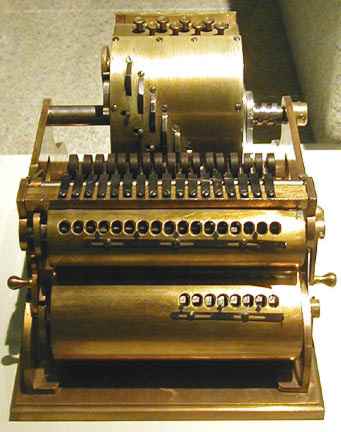| Pre-History of Computing |
| Written by Historian | ||||||
Page 2 of 2
The Slide RuleThe slide rule seems an obvious enough invention once you know about logarithms but Napier didn't think of it - William Oughtred did some years later. Oughtred was a vicar and amateur mathematician who also invented the use of the x sign for multiplication.
William Oughtred (1574-1660) The slide rule is a very simple analog computer. It has scales marked up so that lengths are proportional to logs. By moving the two parts of the rule lengths can be added and the result of the multiplication read off an anti-log scale. Using a slide rule became a skill that every engineer and scientist acquired until remarkable recently.
Slide Rule The first calculatorsLogarithms and slide rules are a step towards making arithmetic easier but they are not really mechanical calculators. The credit for the first such calculator usually goes to Pascal but recently an earlier machine was discovered. Wilhem Schickard built an adding machine based on cogs and gears in 1623 for the astronomer Kepler.
Wilhem Schickard (1592-1635) Wilhem Schickard's calculator made use of a set of Napier's Bones to work out the partial products and then a simple counter mechanism to add them up. Unfortunately the one made for Kepler was destroyed in a fire and Schickard's original machine has gone missing. However despite not having the evidence of the machine itself there is evidence that one existed - i.e. Schickard actually built it rather than just drew it and it worked.
A replica Schickard machine
Even though he wasn't first, the French mathematician, physicist and philosopher, Blaise Pascal does deserve the credit of inventing, in 1642, an adding machine that was produced in small numbers. It is said that he invented it to help his father, an accountant, do the tedious manual work of adding up the books.
Blaise Pascal (1623-1662)
The Pascaline was a very simple "mileometer" type counter. You dialled in the numbers to be added and the result appeared in windows along the top of the machine. The only real innovation was the use of 9's complement arithmetic to avoid having to wind the wheels backwards to perform subtraction. The complement idea only works if you are using a numeric representation that wraps round. For example, if you have a two digit counter that rolls over at 99 then adding 70 to 30 gives the result 00 - 70 plus 29 gets the counter to 99 and one more makes it roll over to 00. If you think about this in a slightly different way, the way a mathematician like Pascal would think about it, 70 behaves like -29 because when you add it to 29 you get 0. You should also be able to see that the complement of any number can be found by subtracting it from 99 or however many 9s the counter goes up to - hence "9s complement".
The Pascaline was of great interest and Pascal and his father thought that it would make their fortunes. But it didn't -partly because clerks and accountants were frightened that it might threaten their jobs! Although the Pascaline could have speeded up many tasks and reduced tedium, clerks and accountants were relatively cheap and so the employers had no real incentive to pay good money to improve their working conditions. Leibniz and the multiplier wheelThe next step on the road to workable calculator was made by another mathematician, the German, Gottfried Leibniz. Gottfried Leibniz (1646-1716) Leibniz is best known for the co-invention of calculus along with Newton and the acrimonious rows that ensued between them. He knew about the Pascaline and recognized its real weakness, the fact that multiplication had to be done by repeated addition. He solved the problem by inventing a new multiplier wheel.
This was a brilliant invention and it not only worked it formed the basis of all of the mechanical calculators that followed right up to the point where they were made obsolete by the electronic computer. Two were built around 1673 but only one survives today. It could have changed the world but Leibniz lost interest and indeed grew bored with it. He moved on to consider more challenging problems like how to reunite the Protestant and Catholic Churches. Leibniz also continued with his work on pure mathematics. In particular he started to think about the number base used to represent numbers. Mathematicians of the time understood the idea of using different bases but the general opinion was that base ten was the best. Leibniz on the other hand became convinced that binary was to be preferred. From our viewpoint the reason is that binary arithmetic is simple and at the time building a binary calculator would have been easier than building a decimal one. But the reason that Leibniz was so keen on binary was that he thought it would be possible to use it to prove the existence of God. In his logic one symbolized God and zero the empty universe. No one was very impressed by this mixture of philosophy and mysticism but he did convert the Emperor of China using the argument. What would have happened if instead of going off into the realms of the ridiculous Leibniz had managed to make the connection between his mechanical calculator and binary? Perhaps the information age would have been introduced along with steam engines. Colmar and the arithmometerAfter Pascal and Leibniz nothing much happened in the mechanical calculator world for 100 years or so. The reason wasn't that the machines didn't work or weren't needed; it was just that the mechanical precision that they demanded wasn't readily available.
Charles Xavier Thomas de Colmar (1785-1870) In 1820 the first calculator manufacturer, Thomas de Colmar, started building machines of the Leibniz type. He was comissioned to build an "arithmometer" for the 1855 Paris Exposition. It has 15 keys for input and allowed for 30 places of results and was housed in a cabinet that resembled a piano
The Colmar "Piano" Arithmometer To put this in context Babbage thought of the difference engine in 1812 and the analytical engine, a true mechanical computer, in 1830. Of course, neither was actually completed. After this point the rate of development increased. In 1870 the Baldwin company manufactured the first rotary drum machines.
Rotary drum calculator The Baldwin company eventually became the Monroe Calculator Company. Other famous names include Friden, Selling and Burroughs. What is surprising is that so few of these companies made it through to the era of electronic computers. Most of them only went as far as making electromechanical peripherals such as paper tape readers. The only conclusion that you can draw from this is that extreme technological change really is about revolution rather than evolution. If what you are good at is precision metal work then you go out of business when electronics becomes the new medium.
<ASIN:0217936474> <ASIN:1116778777> <ASIN:0486270963> <ASIN:0471543977> <ASIN:0521806194> <ASIN:0691141207> <ASIN:0349112398> <ASIN:0818677392>
|
||||||
| Last Updated ( Saturday, 23 April 2022 ) |
